Depiction does not equal endorsement. An artist may explore the depths of something controversial or lurid or profane without giving it their stamp of approval. This is how we defend films, television shows, and other works of art against the myriad pearl-clutchers and watchdog groups who gnash their teeth, gather their pitchforks, and declare that “something must be done.” It’s how we protect the scores of transcendent works about unseemly, unsavory, or otherwise unpalatable personalities who offer compelling narratives, but who may never receive their societally-mandated dose of comeuppance or public shame by the time the story ends.
But here’s a dirty little secret – depiction is much more complicated than either the defenders or the scolds would readily admit.
Make no mistake — the fact that a film simply shows bad behavior, even in seemingly glamorous terms, does not necessarily mean that the director intends it as something to aspire to. The camera itself makes no judgments. Context speaks volumes. But merely pointing a camera at someone or something does still send a message. It says, “This is worth caring about, or at least worth paying attention to.” Aim it at a particular event, or individual, or group of people, and it says theirs is a story worth telling.
Which is to say that when Boogie Nights director Paul Thomas Anderson decided to point his camera at the lightly-fictionalized men and women of the San Fernando Valley porn industry in the 1970s and 1980s, he never truly glamorizes their existence or expresses his unqualified approval for how they live their lives. To the contrary, though the film ends on a note of bittersweet hope, the thrust of the work is how the flash and filth depicted, and the lifestyle that accompanies, thoroughly and pervasively runs these poor folks through the wringer.
But the other side of the coin is that while Boogie Nights does not lionize pornographers, the film goes out of its way not to judge them either. Though Anderson’s script visits any number of misfortunes upon budding star Dirk Diggler (Mark Wahlberg), director and paterfamilias Jack Horner (Burt Reynolds), veteran leading lady Amber Waves (Julianne Moore), and the rest of their friends in the business of pornography, he refuses to look down on them. Anderson does not use their personal nadirs or moments of regret, sadness, and failure as emblems of some sort of karmic justice, but rather as a means to cut to the essential humanity of these people.
In fact, he connects them in the societal scorn each receives. Young starlet Rollergirl (Heather Graham) drops out of high school after being mocked by her classmates for her extracurricular activities. Aspiring entrepreneur Buck Swope (Don Cheadle) is denied the loan he needs to start his company because of his affiliation with the pornographic film industry. Amber, in turn, loses custody and visitation of her son, all because of the business she’s in.
In these scenes, Anderson plays at our sympathies, not in any attempt to put these lost souls on a pedestal, but to suggest that we should, at a minimum, still see them as people, who want and suffer and feel the same as anyone else. If there is an overriding message to be gleaned from the freewheeling, nonjudgmental tone Anderson imbues within Boogie Nights, a film he both wrote and directed, it’s that these people are not simply depraved animals slamming into each other under the California sun; they are damaged, sometimes deluded human beings, who have earnest if occasionally misguided dreams, love one another, and are worthy of our attention and our empathy, if not our approbation.
* * *
That tendency toward empathy is an essential ingredient for the film. It not only allows Anderson to cut a middle ground between fully endorsing or rejecting his characters, but it also keeps him from making fun of them. There are certainly funny moments in the film. Fellow leading man Reed Rothchild (John C. Reilly) and his barely-restrained game of one-upmanship with newcomer Dirk is undeniably amusing. Buck’s clothing choices and his corresponding grand debates about them, not to mention his love of country music, are good fodder for laughs. And Dirk’s pitch for a James Bond-esque series of pornographic films, which he describes in a tone of high-minded conviction, has a certain goofy-yet-earnest comic force to it.
But Anderson doesn’t play these moments for laughs, at least not completely. He plays them for the sad sweetness of sincerity. These hopes and beliefs may be a little jejune or unsophisticated, but they’re genuinely felt by those who offer them. Buck wants to be true to himself, regardless of the raised eyebrows and confused looks that his predilections elicit. Dirk wants to make something meaningful, maybe even visionary, with his work on camera, despite his naivete and the genre in which he operates. And head honcho Jack Horner does not view himself as some mere smut-peddler, but rather as an auteur with integrity who is trying to create works that transcend pornography to become genuine art.
Certainly much of this is laughable; that’s kind of the point. But these scenes are also equal parts sad, endearing, and hopeful. They’re sad because the audience sees most of these characters slapped down by life, in one harsh manner or another, for their aspirations. The viewer watches as each member of the film’s ensemble is hurt in some way by the rejection and scorn the world harbors for their ilk. But these moments are also endearing, and even a little uplifting, in how after all of these setbacks and disappointments, Jack and Dirk and Amber and the rest all stumble back to their feet, try to mend their broken dreams, and go on.
It’s clear that there’s a well of unspoken, sublimated hurt at the core of so many of the characters in Boogie Nights. Dirk’s affinity for Amber, and perhaps even his essential desire to do something good or noteworthy in the first place, come from a hornet’s nest of mommy issues that are established in the few scenes Dirk shares with his abusive mother. Amber is happy to reciprocate Dirk’s affections in the shadow of her own pain and longing for her forcibly-estranged young son.
Rollergirl yearns for a loving mother in much the same terms, and is shown to have internalized the ridicule and shame that have been heaped upon her. Reed puffs himself up to hide some obvious insecurities, but just as quickly turns into an unquestioning lackey when bested. Buck struggles in the space between who he has become and who he hopes to be. And Scotty J (Phillip Seymour Hoffman) is a quietly wounded man suffering with the stigma of his sexual orientation. Almost all of the characters at the center of Anderson’s world carry a certain emptiness with them, and the film shows them each trying to fill it with the sleazy glitz and the accepting, easy comforts of the pornographic film industry, with decidedly mixed results.
* * *
That hurt at the core of the film’s ensemble elevates what might otherwise be an intriguing, if fairly standard rise-and-fall narrative into something greater. Boogie Nights meets its protagonist as his career begins in the midst of the salad days of the San Fernando Valley adult film industry. It follows his story as Dirk and his inner circle reach the pinnacle of their business and quickly come to enjoy the spoils of success. The first half of the film is spent on that dizzying climb to the top, both for Dirk himself and for an industry hitting its peak. But the film depicts the end of the 1970s as coinciding, almost too perfectly, with the end of the industry’s high times. This divide, and the ills it portends, manifest in two ways at Jack Horner’s New Years Eve party at the dawn of the 1980s.
The first is a conversation Jack has with porno theater mogul Floyd Gondolli (Philip Baker Hall), who pours cold water on Horner’s mission to make films with merit beyond the sex scenes. Gondolli explains that the rise of videotape, and with it the ability of viewers to fast forward and rewind, means that the “action” will become the end-all be-all of their business, and Jack’s pretensions to art will have to fall by the wayside. Gondolli’s predictions for the coming decade prove accurate, and Jack gradually feels himself becoming more and more the owner of a factory churning out an undifferentiated product, rather than the auteur he once styled himself as.
It’s an intriguing element of the film, because the tone seems to suggest a certain sense of pity for Jack and what his work has devolved into. But at the same time, Anderson seems, at best, ambivalent as to whether what Jack makes is actually art. For all the purple prose Jack offers to Dirk and his other young stars about the importance of what they do, his actual results look fairly ridiculous. In keeping with the consistent motif of a sympathetic, yet still warts-and-all portrayal of the film’s subjects, that may be the point.
Boogie Nights does show Dirk’s first scene in one of Jack’s films using techniques that suggest at least the trappings of artistry, with sweeping, almost dream-like shots that heighten a sense of virtuosity in the moment. But for whatever Jack’s grandiose vision is worth, the cheesy Starsky & Hutch-esque intro to Dirk’s 007 knockoff, not to mention the stilted dialogue (taken from actual ‘70s porn films) and cornball effects in each of his studio’s releases, belie the idea that these were timeless expressions of the soul.
On the other hand, Anderson still depicts Jack’s descent from self-styled auteur to VHS game-manager as a tragic one. This once starry-eyed, if not exactly naive director feels both detachment and anger from his work.
These feelings boil over in a scene where Jack beckons a random college student into a limo for a gonzo sex scene with Rollergirl. Jack sees himself as a creative force, and his actors as talented, vital parts of his vision. The chump he brings into the limo, however, resists Jack’s direction and his attempts to make the scene more sensual. He brushes them off to the tune of “just let me do my thing.” And this college student, who coincidentally knew Rollergirl from before she became a porn star, nevertheless sees her as little more than a means to get off.
The sequence is a microcosm of Jack’s predicament, and to some degree, the greater themes of the film itself. Jack wants to make art. Rollergirl wants to be treated like a human being. The chump just wants to find the quickest way to get from A-to-Z, and couldn’t care less about either of them. It’s emblematic of the tension at the heart of the film. After Jack has had enough, he and an equally affronted Rollergirl leave the man bleeding on the pavement in their frustration and disgust.
* * *
The film also marks the divide between the 1970s and the 1980s when cuckolded “Little” Bill Thompson (William H. Macy), at the same New Year’s Eve party, walks in on his wife once again sleeping with another man, and reaches his breaking point. Little Bill calmly strolls out to his car, retrieves a pistol, and shoots his wife and her lover as the clock strikes midnight. Amid the murmurs and commotion when the gunshots are heard, Little Bill walks back into the living room, serene as anything, and sticks the pistol in his mouth. He pulls the trigger as the film quickly cuts to a title card that reads simply “80s”.
Little Bill’s murder-suicide is a turning point in the narrative, a sign that the rest of the film will explore how the party-goers at Jack Horner’s home could not escape the consequences of the lives they were leading forever. Eventually, the darker side of all this high living would catch up with them. Dirk would fall into cocaine addiction and lose his ability to maintain an erection. Amber would lose visitation rights with her son for good. Buck would struggle to start his business and make a new life for himself. Scotty J would continue to be unfulfilled and self-hating. And Jack would see the minor artistic empire he had built become something he no longer recognized or cared for.
* * *
Part of what makes these events feel tragic, and by the same token, makes the oft-deluded individuals involved feel so human and so present, is the dialogue Anderson writes, and the compelling way he shoots so many of the film’s most significant scenes. In each, he’s able to blend his stylistic flourishes with a sense of realness in the moment.
The film’s dialogue is decidedly naturalistic. It’s not as raw or scraggly as the exchanges in a mumblecore film, but Anderson allows his characters to murmur, double back, go on tangents and stumble through their fragmented thoughts. There are a few grand bits of oratory here and there, but they’re few and far between, and many of them, like Dirk’s big speeches, feel like the kind of approximation someone from his background would cobble together when trying to mimic someone like Jack. But otherwise, for a film that, at times, feels very stylized, Anderson never lets his dialogue prevent the characters from sounding like real people.
That sense of a meld between flair and naturalism is sustained in Anderson’s choices for the film’s editing and cinematography. Much has been made of the long take at the beginning of the movie, where the camera sweeps through Maurice Rodriguez’s (Luis Guzman) club and effectively introduces the film’s characters. But while these and similar shots throughout the film are technically impressive, what makes them effective and not mere affectations is how they allow these scenes, and the characters who populate them, to feel genuine.
When, in a single take, the camera drifts from conversation to conversation at one of Jack’s parties, only to then move underwater to capture Dirk’s dive into the pool, it doesn’t just show off the range and dexterity of Anderson’s filmmaking; it makes the viewer feel like they’re at the party alongside the characters. Rather than an array of individual moments, sewn-together to convey plot and character information, there’s a hangout vibe in these scenes, an almost cinéma vérité sense that we’re just observing these people at play. Long, unbroken shots run the risk of seeming overly choreographed, but here Anderson’s camera makes the viewer feel like an invisible guest, wandering from conversation to conversation, moment to moment, without it feeling contrived or artificial.
And even when Anderson and Dylan Tichenor, the film’s editor, are less judicious in their cuts within a scene, they’re still plenty willing to sit back and a moment breathe. Anderson is more than happy to let spend minute after awkward minute with his characters just sitting on a stranger’s couch, while a random man throws firecrackers on the floor and a squirrelly, bathrobe-clad drug dealer dances to “Jessie’s Girl”, letting the tension build all the while.
He strikes the right balance between these wonderful, natural moments and the more fanciful sequences like the cutaway to Dirk’s name in lights. That patience, the way Anderson is content to let the viewer see the beginning, middle, and end of even the most roundabout, unfocused conversations or otherwise low-key sequences, drives home the truth at the heart of both how he constructs his scenes and how he shows what makes his characters tick.
* * *
Each of those characters feel like real individuals swept forward amid the relentless movement of the film’s story. The score, replete with period-accurate pop songs, never seems to stop. One song bleeds into the next, lending to the film’s near-relentless feel. There’s a palpable feeling of constant movement in Boogie Nights bolstered by that choice, a sense that these people are caught in a perpetual motion machine that no one has the wherewithal to stop. Then, suddenly, everything breaks down in a handful of tremendous scenes toward the end of the film.
In one of them, the camera zooms in on Dirk at the home of a drug lord whom, unbeknownst to him, his friend Todd Parker (Thomas Jane) intends to rob. Dirk smiles, and in the middle of his cocaine-fueled haze, the same one that seems to follow him throughout the latter part of the film like a dark cloud, Dirk finally has a moment of clarity. The film comes to a nigh-wordless standstill for just a moment. Dirk gazes off at nothing in particular, and he looks as though he finally understands how far he’s fallen. His impulse to escape, to do better, or at least other, likely saves his life.
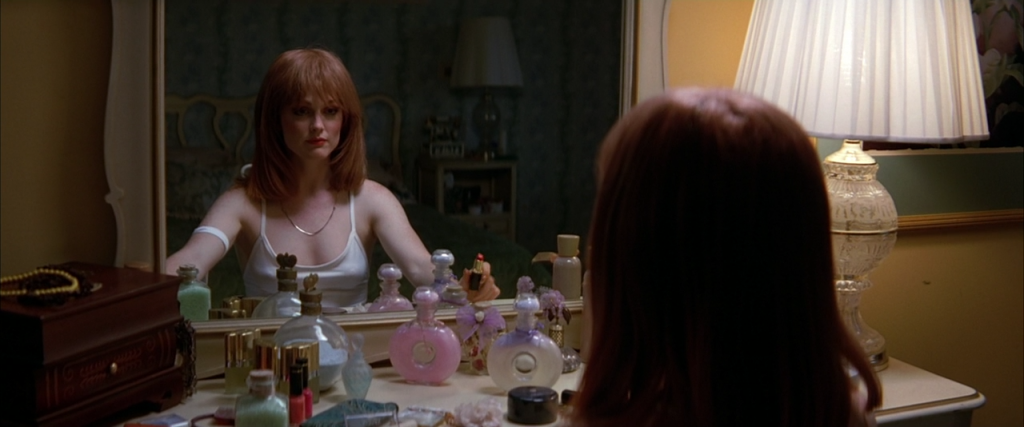
Julianne Moore's Oscar nomination for this film was well-deserved for how much buried pain she conveys in her performance.
Then, in the film’s final sequence, everyone has returned to Jack’s compound and life has resumed some semblance of normalcy. Amber has a subtle look of wistfulness hidden behind her brave face, but she’s ready to perform once again. Jack is back at work, wrangling his crew to make a film that looks more in line with his classics. And Dirk sits alone in his dressing room, psyching himself up for one more scene.
* * *
Dirk’s penis is the Jaws of Boogie Nights. It’s talked up by everyone in the film, emphasized by implication, and given the heightened significance of going unseen until the very end of the film
Nevertheless, when it’s finally put on display in that last moment, when Dirk drops his pants in front of the mirror to try to remind himself what makes him special, we see him from a distance, apart from the glamour and misery he’s experienced. The scene is shot with the same stark perspective that Anderson brings to the film as a whole, neither critical nor aggrandizing. While Dirk needs that much ballyhooed member to make himself feel worthwhile, it’s depicted in such plain terms. The motivating force behind all that takes place in Boogie Nights is shown as some mere inches of unremarkable flesh, just another part of another human being.
Anderson doesn’t pass much judgment on pornography in Boogie Nights, or on the men and women who make it. Instead, he exposes the humanity at the core of these wounded individuals. But judgment or no judgment, for all the beauty and sensuality and wonderful highs and heartbreaking lows that Anderson explores over the course of the film, that last shot can’t help but say something with its starkness. “All of this, all of these successes and failures and glories and hardships, just for that?” Depiction may not equal endorsement, but it can still send a message.

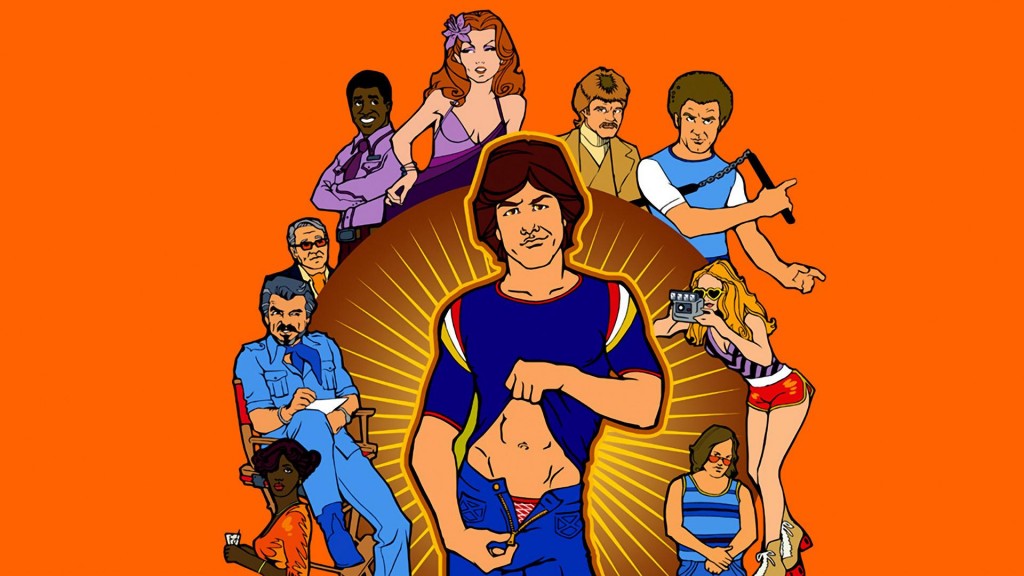
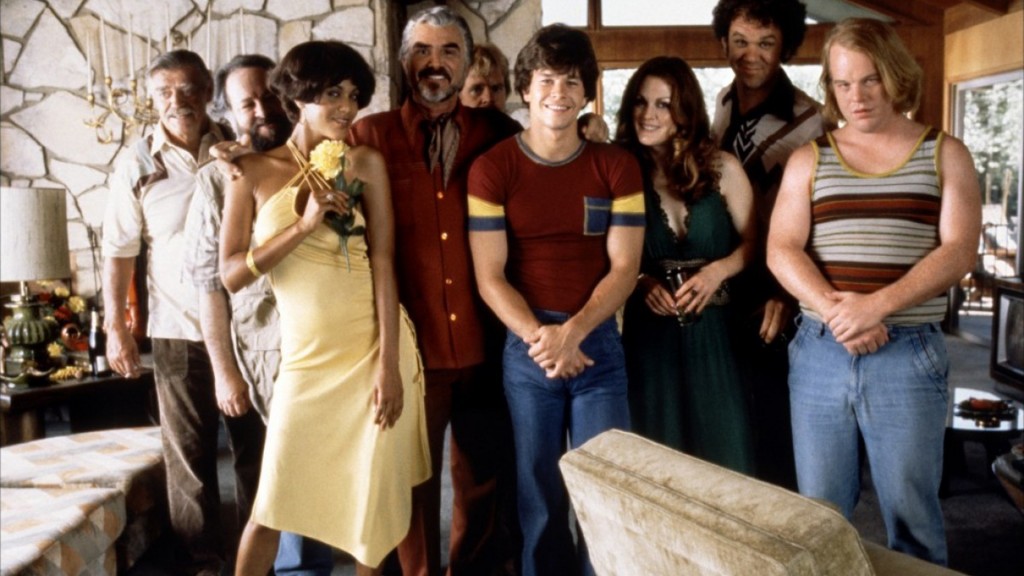
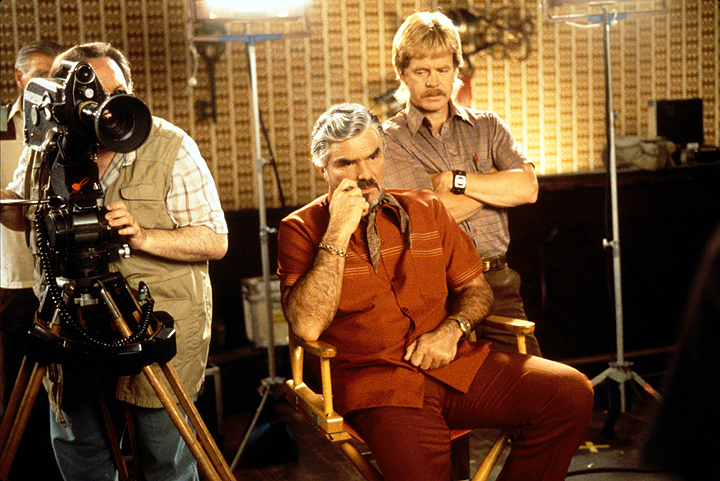
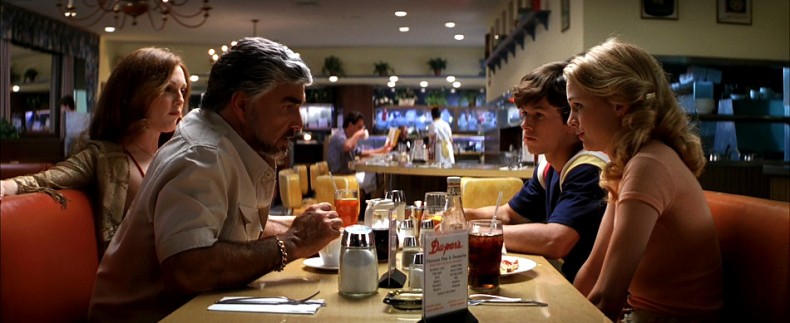
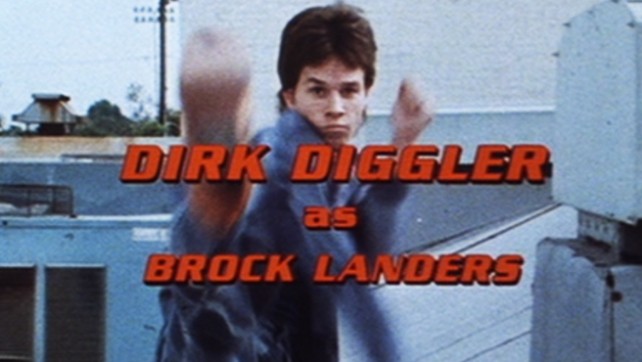
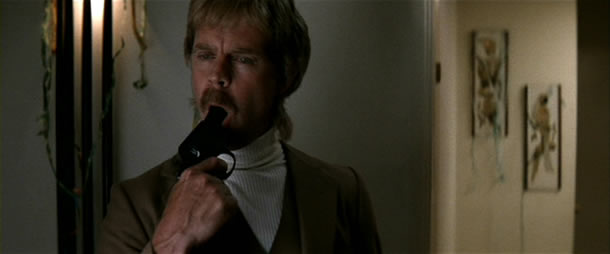
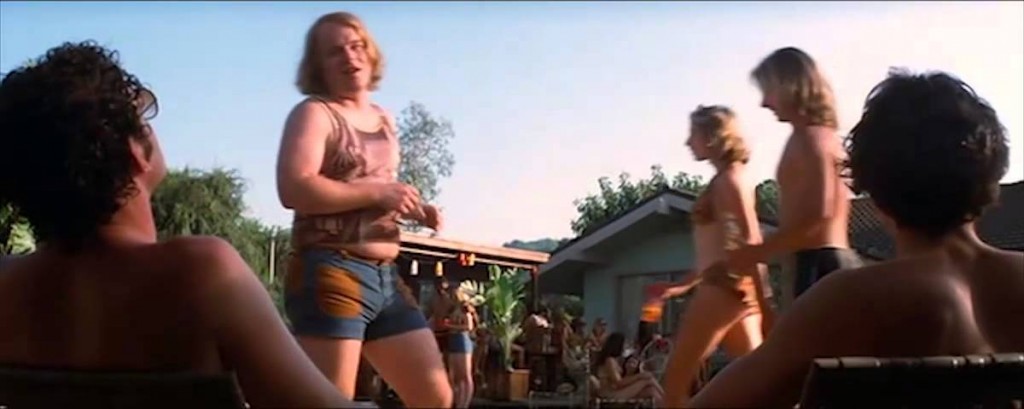
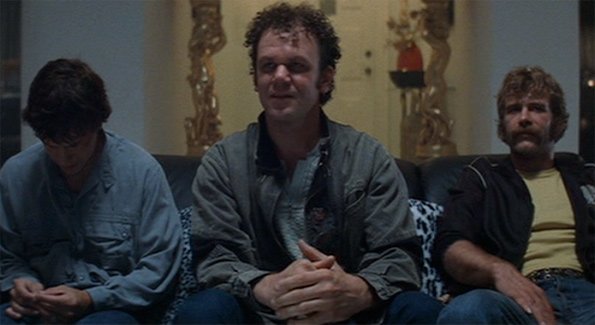
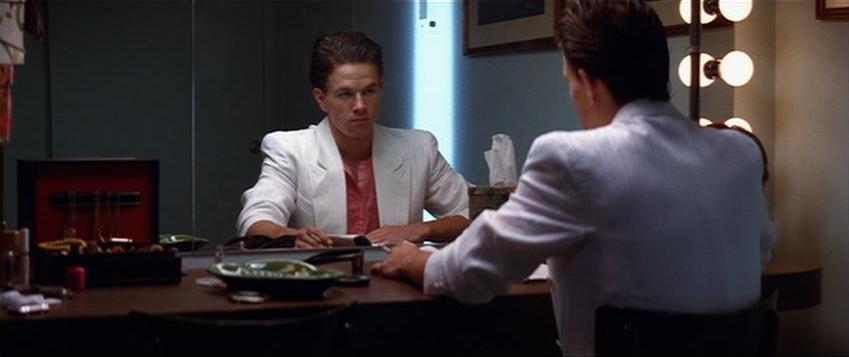
6 Responses to Boogie Nights: Depiction, Endorsement, and the Wounded Humanity of P.T. Anderson’s Film